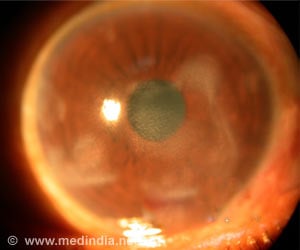A team of researchers have investigated whether congenitally blind subjects experience pain a bit differently than individuals having normal sight

Investigators recruited one group of 11 congenitally blind and 15 normal-sighted participants from Italy and a second group of 18 congenitally blind and 18 normal-sighted participants from Denmark. They conducted three experiments. The first compared pain thresholds and responses to suprathreshold pain (pain of sufficient intensity to produce a physiologic effect) stimuli among members of both groups. The second measured detection thresholds for warmth and cold perceptions. The third tested whether study results could be reproduced in an independent study population with culturally distinct ways of responding to pain.
Researchers used thermal probes on the medial forearm to measure thresholds of pain. The congenitally blind participants were allowed to touch the equipment beforehand and received verbal descriptions to reduce any anxiety. Sighted subjects were blindfolded during the actual testing. All subjects reported feelings of heat or cold pain through use of a response button. To assess suprathreshold pain, the researchers used a laser stimulation device. All participants completed a pain vigilance and awareness questionnaire, which allowed researchers to gather information on attitudes toward pain in daily life.
The study team found that compared with sighted subjects, congenitally blind subjects have lower heat pain thresholds, rate suprathreshold heat pain stimuli as more painful than the normal-sighted reported, and have increased sensitivity to cold pain stimuli.
In addition, interesting cultural differences emerged. "There is evidence that, compared to people from northern countries (e.g., Denmark), people in southern countries (e.g., Italy) are more emotionally expressive and responsive to pain," says lead investigator Ron Kupers, PhD, Director of the BRAINlab, Department of Neuroscience and Pharmacology, Faculty of Health and Medical Sciences—Panum Institute, University of Copenhagen, Denmark.
The results of the pain questionnaires further demonstrated that blind subjects are more attentive to external threat signals. Dr. Kupers concludes, "We have shown that the absence of vision from birth induces a hypersensitivity to painful stimuli, lending new support to a model of sensory integration of vision and pain processing."
Advertisement














